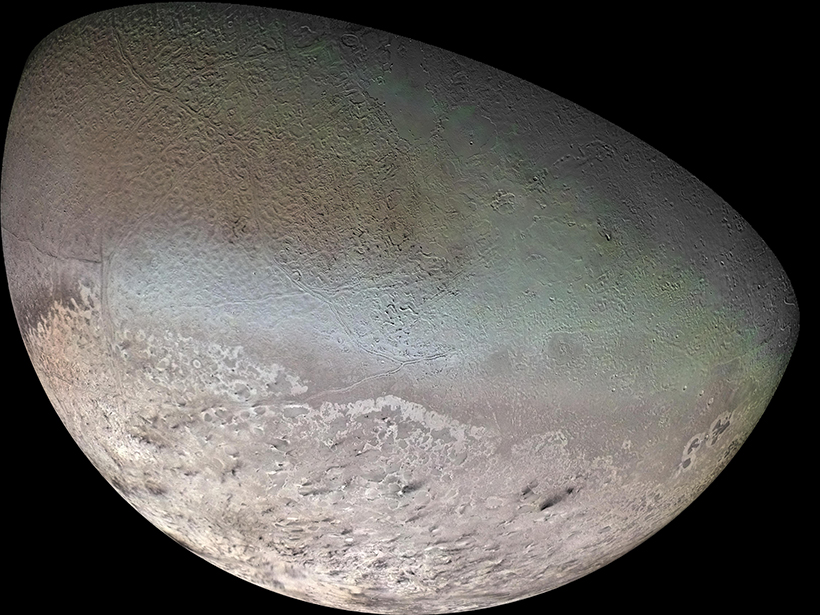Source: Journal of Geophysical Research: Planets
A planet’s continents move for more than one reason. On Earth, most people recognize that continents move and change shape slowly due to plate tectonics, the movement of Earth’s crust over the underlying mantle. A planet’s topography can also change as a result of a phenomenon called true polar wander.
True polar wander is the phenomenon in which a large mass, if placed at high latitudes, will gradually shift toward the equator. When viewed from outside the system, the axis of rotation remains roughly the same, but the land over it has now shifted. From the perspective of a person within the system, however, the pole has “wandered” away from where it used to be.
Current models of the movement of true polar wander do not incorporate how wandering poles are affected by tidal force: the force of the planet’s spinning motion combined with external gravitational pulls from moons or other nearby planets. Hu et al. set out to establish a numerical method for calculating the movement to address the issues with current approaches. This is the first study to model true polar wander with physical properties of both spin and tides.
The authors chose to research planets and moons without a remnant bulge. When Earth was young and first forming, its outer layer cooled into an ellipsoid, meaning that the diameter at the equator is larger than the diameter at the poles. Remnant bulges at the equator tend to make planetary bodies more stable and keep the poles of the rotational axis in a more fixed position.
Instead, in planetary bodies that do not have a remnant bulge, the poles and topography are more likely to reorient themselves. Triton, Neptune’s largest moon, is one such planetary body, with a surface covered in nitrogen ice.
The scientists’ numerical approach combined the centrifugal force and the tidal deformation with the mass of the planet and radius of its orbit. Finally, the authors added the value for any mass anomalies, for which there might be extra or less mass than average in specific areas of the planet body. This input is important because the difference in mass across the planet affects how it spins and the poles move.
The authors simulated the true polar wander of Triton to test their model and see how the moon would reorient its poles. When Triton’s simulation had a positive mass anomaly, or more mass than average, the poles first wandered around the axis that represents the strongest pull of tides, rather than heading straight for it. Previous studies have modeled the final end point of these wandering poles but not the pathway they take to get there.
As satellites and space probes go deeper into the reaches of the galaxy, more planets and moons will be discovered. Finding out how the different planetary bodies change, orbit, and reorient themselves will help scientists gain a better understanding of planetary dynamics. This study is another step toward unlocking the complexities of these bodies and offers a new model for future research. (Journal of Geophysical Research: Planets, https://doi.org/10.1002/2016JE005114, 2017)
—Alexandra Branscombe, Freelance Writer
Citation:
Branscombe, A. (2017), Time, tides, and wandering poles, Eos, 98, https://doi.org/10.1029/2017EO076951. Published on 05 July 2017.
Text © 2017. The authors. CC BY-NC-ND 3.0
Except where otherwise noted, images are subject to copyright. Any reuse without express permission from the copyright owner is prohibited.

